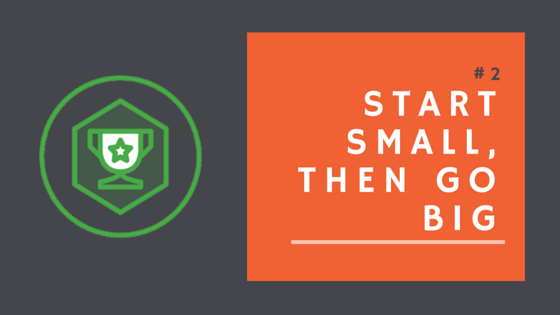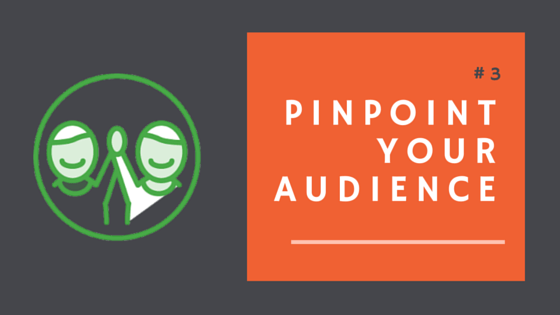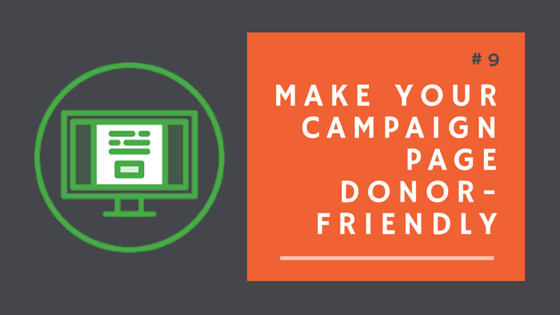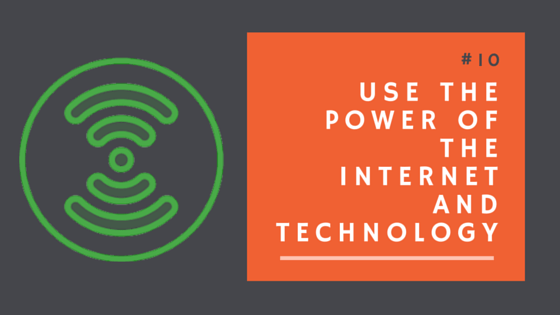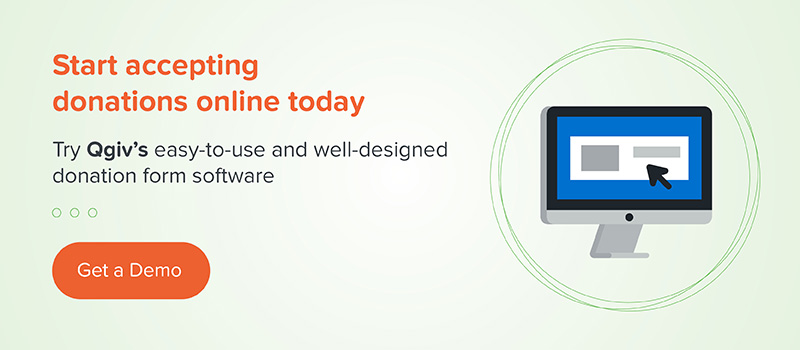When people talk and share information about your fundraiser, the reach of your donation campaign increases exponentially. That can mean more donations and greater success for your cause.
If you want to maximize your fundraising efforts, building excitement and chatter (or “buzz”) around your campaign is one of the top priorities.
Here are 10 tips for generating that all-important buzz around your web-based donations campaign.
1. Define Your Audience
Make a plan for reaching your preferred (i.e. responsive and rewarding) audience. Figure out exactly who you want to reach and how you’re going to convince them to donate to your cause or help you spread the news (or both!).
Consider key aspects such as:
- The power of your cause or message
- The persona of your average audience member
- Best times for reaching your target audience
- Which online donation tools and mediums are most effective for encouraging and enabling your audience to donate and/or spread the news
Make a game plan with your answers and refer back to it throughout the campaign to stay on track.
A carefully thought-out strategy will help you focus your energy on tasks that support your goal of expanding your audience and encouraging others to.
2. Start Small, Then Go Big
Don’t forget about your own personal network for help and support. Tell your friends, family, neighbors, coworkers, and acquaintances.
Not only are these people built-in donors, they can also help you spread the word via social media, word of mouth, and other means.
Including your immediate community in a fundraiser, even a web-based one, is an excellent way to establish a strong foundation before your begin to think bigger.
3. Pinpoint Your Audience
After tapping into your personal network, look outward.
Where else can you spread your message? If you focus on a few channels and put your energy into those versus trying to conquer the entire web, you’ll see better returns.
Choose platforms and outlets where you know the audience will be most receptive.
4. Be Human
When donating their money, people respond to true stories about real people who they’ll be positively impacting. They are far less likely to want to support a faceless brand.
You need to show why your cause is worth their time and money. It might sound easy, but appealing to emotions via a web page can be difficult.
A good rule of thumb for humanizing your campaign content is to write the same way you would speak to a close friend. Would you shy away from displaying emotion if you were sharing your cause with a best friend? No, you’d communicate your passion by emphasizing words, speaking with excitement, telling stories, and providing real world examples of who benefits from your campaign.
Do the same with your web-based campaign by using punctuation (!); sharing names and faces; crafting short, sweet, punchy statements; talking about personal experiences; and providing stories of how your cause benefits others.
5. Get Social
Social media and fundraisers seem like they were made for each other. Sharing a passion or encouraging support for a cause is an emotional appeal, and social media audiences respond strongly to emotional appeals.
People expect to see personal causes and campaigns on social media, and they are open to providing support, monetary or otherwise.
The beauty of using social media in your web-based donation campaign is that it provides the audience with multiple ways of contributing. If a small donation is too much to ask, clicking the Share or Like button is also an option.
There is a ton of information about social media and fundraising and it can be tough to figure out what advice is worth following and what’s not.
For more information, we suggest you take a look at some of the content that the folks at Whole Whale have put together.
Learn to look at your organization’s own data to see where you can capitalize on social media for your donation campaign with their free course at Whole Whale University.
6. Utilize Visuals
You know what they say: a picture is worth a thousand words.
This is especially true when it comes to Internet fundraising. You want to give potential donors an inside look at the conditions or people to whom they’ll be contributing.
Use high quality images or – better yet – create a video for your campaign. It doesn’t have to be fancy! It just needs to communicate your message clearly and inspire people to give to your cause.
A short video clip will show potential donors a much clearer picture of the cause you’re championing better than a few paragraphs ever could.
7. Make It Urgent
Limiting the run of your donations campaign might seem counter-intuitive, but setting a time limit can actually help increase the amount of donations you receive.
Why is that?
There are two main reasons:
- Urgency communicates importance. Telling potential donors that they must donate quickly reassures them that your cause is worthwhile and that their donation will have an immediate impact.
- Urgency employs the Scarcity Principle. It’s sad, but true – we want something more if we think we’re going to lose it. If you let your campaign drag on and on, potential donors will assume they have plenty of time and will delay their donation (or forget completely) until it’s too late for your cause.
8. Offer Rewards
A heartfelt “thank you” email or handwritten letter is a must for your donors, but if you really want news to spread about your campaign, you can reward donations with exciting gifts.
Offer special experiences for those who donate at a certain level (an invitation to a special event connected with the campaign, dinner with a celebrity who supports your cause, exclusive ‘backstage’ access to your campaign process, etc.).
Offer a product of value to your target audience (an item autographed by a VIP related to your cause, one-of-a-kind memorabilia, or even a t-shirt that has a message that makes the wearer feel proud for donating).
And don’t forget to implement the Scarcity Principle with your reward offerings: “Donate now before the gifts run out!”
9. Make Your Donation Campaign Page Donor-Friendly
A well-designed fundraising campaign page makes sure that users can easily figure out how to make a donation on your page.
There aren’t confusing hoops to jump through, too many pages with information, or a puzzling intro message that distracts from your main goal.
The simpler the donation process is, the easier it is for your audience to encourage their friends to donate too!
10. Use the Power of the Internet and Technology
A good app or online donation program can make your life a whole lot easier when it comes to managing donations.
- Mobile apps — There are apps out there that let donors participate in your campaign via their mobile devices, where they can donate with just a few taps. These apps will let you create fundraising campaign pages, which are the “hub” of all your activity. This is a good option for campaigns that don’t have their own website.
- Web applications – These will let you set up a donation page and manage donations without having to install any software.
- Donations software – Manage everything via your computer. This option, as well as web applications, is best for larger campaigns, where the number of donors is too hard to manage on a smaller platform.
Further Support for Web-based Donation Campaigns
You’re passionate about your cause and willing to spearhead a fundraiser, but you shouldn’t do all the work alone. There are many more resources that will help you boost the reach of your online donations campaign and generate buzz among your target audience. Qgiv has plenty of tools, tips, and guides, so start there when you plan your next online fundraising campaign.
Brent Nau is the SEO Team Director for Thrive Internet Marketing, a web marketing firm based in Texas, Florida, and South Carolina. Since 2006, Brent has assisted small regional brands as well as leading national brands with building online marketing campaigns, however, his real claim to fame is his ability to find the perfect reaction GIFs for every situation imaginable.

